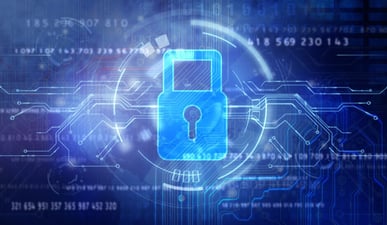Utility Network Protection: Securing Critical Infrastructure
Utilities provide essential services such as electricity, water, and gas, making them a prime target for cyber threats. As cyberattacks on critical infrastructure increase, ensuring robust network protection for utilities is vital for maintaining service continuity, preventing data breaches, and safeguarding operational technology (OT) environments. A comprehensive cybersecurity approach is necessary to defend against evolving threats and ensure resilience.
The Growing Need for Network Protection in Utilities
Utility networks are complex and interconnected, involving IT systems, OT systems, industrial control systems (ICS), and cloud-based services. Cybercriminals target these networks to disrupt services, steal sensitive data, or deploy ransomware. Without proactive protection, utilities risk operational shutdowns, financial losses, and compliance violations.
Did You Know?
Did you know that cyberattacks on utility networks have increased by 60% in the past five years, with many attackers exploiting vulnerabilities in outdated systems?
Key Components of Network Protection for Utilities
1. Real-Time Threat Monitoring
Continuous network monitoring ensures early detection of suspicious activities and potential cyber threats before they escalate.
2. AI-Powered Threat Detection
Machine learning and artificial intelligence (AI) analyze network traffic to detect anomalies and prevent sophisticated cyberattacks.
3. Segmentation of IT and OT Networks
Separating IT and OT networks prevents threats from spreading across different areas of utility operations.
4. Zero-Trust Security Architecture
Implementing a zero-trust approach ensures strict identity verification for all users and devices accessing critical systems.
5. Multi-Factor Authentication (MFA)
Requiring multiple authentication factors prevents unauthorized access to utility networks.
6. Secure Cloud and Remote Access
With many utilities adopting cloud services and remote monitoring, securing these access points is essential for network protection.
Benefits of Strong Network Protection for Utilities
1. Reduced Cyber Risks
Enhanced network protection minimizes the risk of ransomware attacks, data breaches, and operational disruptions.
2. Compliance with Industry Regulations
Utilities must adhere to cybersecurity regulations such as NERC CIP, NIST, and CMMC. Strong network protection ensures compliance and reduces the risk of penalties.
3. Improved Operational Resilience
By securing networks, utilities can maintain uninterrupted service delivery even during cyber incidents.
4. Faster Incident Response
With automated threat detection and response systems, utilities can quickly identify and mitigate threats.
5. Cost Savings
Proactive cybersecurity measures reduce the financial impact of cyber incidents, including downtime, legal fines, and ransom payments.
How to Strengthen Network Protection for Utilities
To enhance network security, utilities should:
- Deploy Continuous Network Monitoring: Implement real-time monitoring tools to detect and mitigate threats.
- Adopt AI-Based Threat Detection: Use AI and machine learning to analyze network traffic and identify anomalies.
- Enforce Strict Access Controls: Utilize zero-trust policies and multi-factor authentication to prevent unauthorized access.
- Secure Remote Access: Implement virtual private networks (VPNs) and endpoint protection for employees accessing utility systems remotely.
- Conduct Regular Security Audits: Assess security vulnerabilities and patch outdated systems to prevent exploits.
How BitLyft AIR® Enhances Network Protection for Utilities
BitLyft AIR® provides comprehensive cybersecurity solutions tailored for utilities, offering real-time monitoring, AI-driven threat detection, and automated incident response. With BitLyft AIR®, utilities can safeguard their networks and prevent cyberattacks before they cause harm. Learn more at BitLyft AIR® Security Automation.
FAQs
Why is network protection important for utilities?
Utilities provide critical services and are frequent targets of cyberattacks. Strong network protection ensures uninterrupted service and data security.
What are the biggest cyber threats to utility networks?
Ransomware, phishing attacks, insider threats, and vulnerabilities in operational technology (OT) are among the top threats.
How does AI improve network security in utilities?
AI-powered cybersecurity analyzes network behavior, detects threats in real-time, and automates responses to mitigate risks.
What security regulations apply to utilities?
Utilities must comply with NERC CIP, NIST, CMMC, and other cybersecurity frameworks to ensure industry-wide security standards.
How does BitLyft AIR® enhance network protection?
BitLyft AIR® provides AI-driven threat detection, real-time monitoring, and automated response to secure utility networks.





